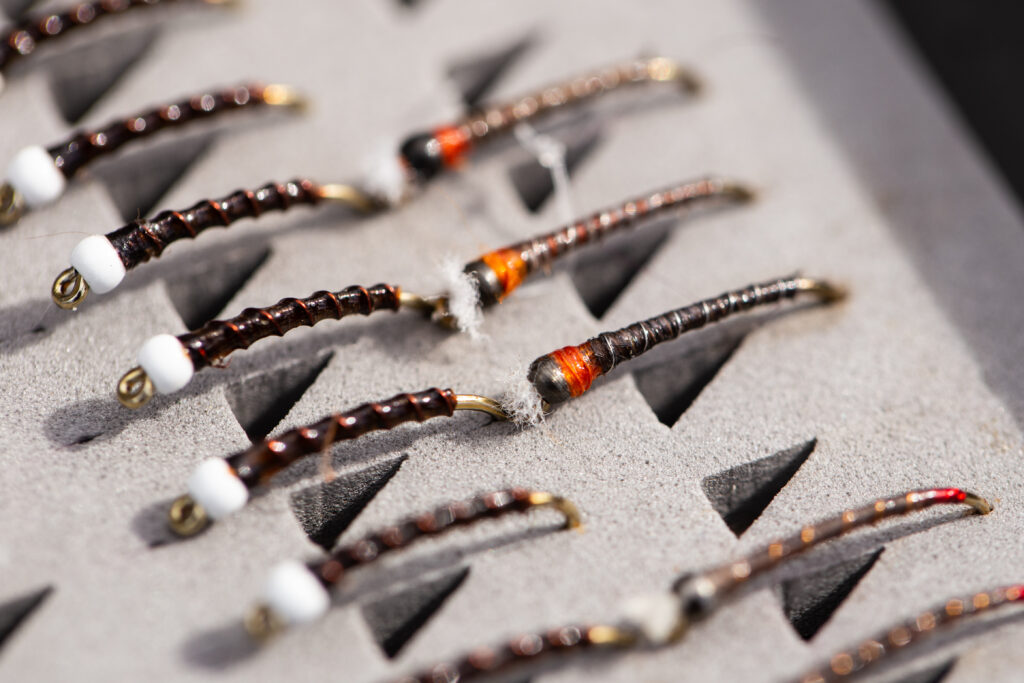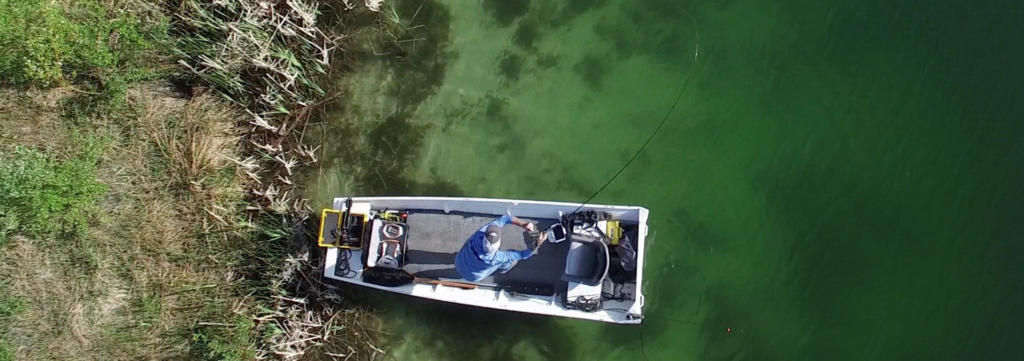When lake waters warm to between 10° to 15°C in the spring, extended periods of insect hatches begin, and it’s the perfect time to go fishing. For those living in Vancouver or Fraser Valley looking for a daytrip or overnight getaway, there are many excellent fishing lakes within a few hour’s drive in the Merritt-Kamloops region. In this guide, we’ll look at some of the top fishing spots around Merritt, and tackle and techniques you’ll need for fishing success.
Popular Fishing Lakes in the Merritt-Kamloops Region
In the Merritt-Kamloops region, Lundbom, Marquart, Harmon, Lower Kane, Courtney, Jocko, Stump, Roche, Mamit, Tunkwa, and Leighton are good lakes to fish. Many of these have a B.C. Recreation Site with camping facilities. Tunkwa, Leighton and Roche lakes are located within BC Parks, and also have camp sites, but note these can fill up quickly so arrive early! There are many other lakes in the area that are stocked by the Freshwater Fisheries Society of BC. Check out the Where to Fish map to find a new lake to explore. Drop by a local fly shop for the most up-to-date advice on which colours and sizes of fly patterns may be hot for the lake you plan to visit.

Leech and Shrimp Patterns
Early-spring fly-fishing in most Interior lakes starts with leech and shrimp patterns, as insect hatches have not started yet. You will want to fish the drop-offs along the shore, or points where reed beds stick out in the lake. Try fishing either pattern under a strike indicator along the drop-offs near the bottom. If you see fish surfacing from deeper water of six to nine metres (20 to 30 feet), then fishing your flies at mid-water depths of 3.6 to five metres (12 to 16 feet) with an indicator can be very effective. Those fish are very rarely coming from the bottom, but rather are cruising mid-water.
As an alternative, you can also cast and retrieve the same patterns using a full sinking line (with a suitable sink rate to match the depth of water you are fishing). With this method, cast your pattern out, and allow it to sink to your desired depth; use a longer “arm drop” retrieve with leech patterns, and a short, jerky retrieve with the shrimp to closely imitate their natural movements through the water. Fish these invertebrate patterns using these methods throughout the spring, summer, and fall.

Chironomid Patterns
With spring’s warming water temperatures, the main food source for rainbow trout – chironomid pupae – begin to hatch. There are over 2,000 species of chironomidae, and they come in a wide array of colours and sizes. The first chironomids to hatch, commonly called midges, are very small. Midge patterns in tiny #18 to #22 sizes can be hard to imitate. When larger chironomids hatch, the bulk of the best fishing takes place using pupae patterns in sizes #12 to #16. The determining factor for these hatches is water temperature, but the timing for the peak varies from lake to lake (and, for that matter, from year to year). The optimum temperature for chironomid hatches is 10° to 15°C, but good hatches can still occur up to 18°C.


Chironomid Fishing Techniques
There are three main ways to fly-fish chironomid pupal patterns: floating line with an indicator; floating line with no indicator (also referred to as “fishing naked”); and with a full sinking line when fishing depths of water over 7.5 metres (25 feet). Whichever method you prefer, the idea is to imitate the motion of a chironomid pupa as it swims from the bottom of the lake to the surface. When fishing with an indicator or a naked line, cast your fly out, allow it to sink, then slowly retrieve it, just inching the line in to remove any slack. If fishing with a full sinking line, cast out, find the bottom, and simply bring in your line using a very, very slow hand-twisting retrieve. When a fish takes, your rod will just bend over.

Rainbow trout caught in Stump Lake.
Using Chironomid Patterns with a Spinning Rod
Even if you are not a fly-fisher, or you’re an angler with little experience, you can still fish these chironomid pupae patterns very effectively with spinning gear. Tie a small barrel swivel onto your main line. Attach a small one-quarter-ounce slip weight above the swivel, then tie on 75 centimetres (30 inches) of four- to eight-pound-test fluorocarbon leader to your fly. To adjust for the depth you wish to fish, add a 10- to 15-gram slip-type float to your main line above the weight. If fishing deeper water, just take off your float and let your rig drop until the weight hits bottom, and then wind in 90 to 120 centimetres (three to four feet) of line to keep your fly just off the bottom. Watch your tip; the take will just bend the rod over.
Choosing the right fly for colour and size can be very important. The easiest way is to use a throat pump on the first fish you catch, and then match the hatch.
Chironomid patterns in black, brown, green, gunmetal, chrome, red, and variations of these colours are good choices to start out with. The most common sizes are #16 up to #10.
Before heading out to the lake, make sure you have your freshwater fishing licence, and check the regulations for the lakes you intend to fish. Get out there and enjoy the excellent spring fishing around Merritt!
Author: Nick Basok, Freshwater Fisheries Society of BC Ambassador.
Images: Nick Basok, Brian Chan, Brent Gill.
